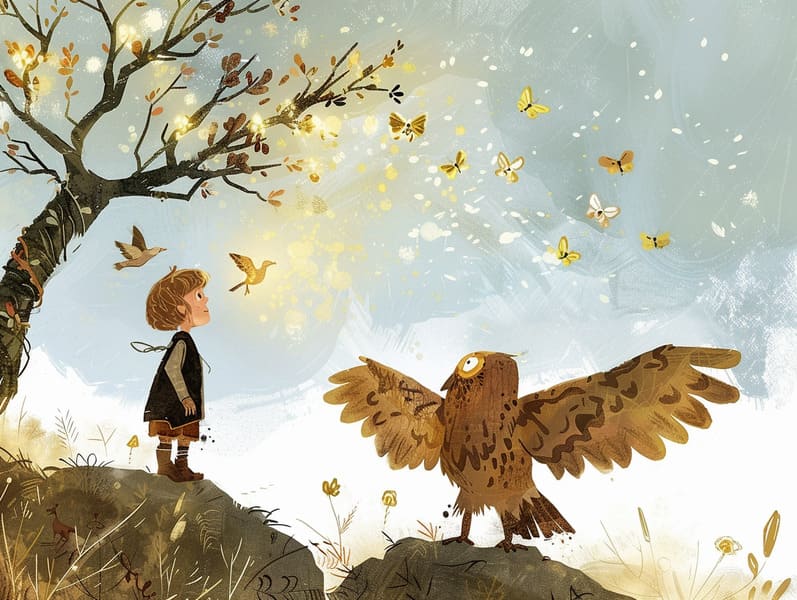The Beginning of Popular Fairy Tales and Their Unending Mystique.
The Beginning of Popular Fairy Tales and Their Unending Mystique.
Blog Article

Historical fairy tales have long histories. These stories have been conveyed from one generation to the next well before they were ever put on paper. They emerged from a variety of societies, including Asian traditions. They were initially told among grown-ups, often carrying themes and messages reflective of the societal norms and beliefs of the time.
The famous Grimm duo, Jacob and Wilhelm Grimm, were among the first to compile many of these beloved fairy tales. Their anthology, "Grimm's Story Collection," included stories like "Cinderella," "The Story of Hansel and Gretel," and "Snow-White and Rose-Red," which have since become cornerstones in the world of children's fairy tales. Similarly, H. C. Andersen's charming tales, such as "The Story of the Little Mermaid," and "The Duckling's Story," have stolen hearts worldwide, establishing their place in the pantheon of timeless fairy tales.
Despite being ancient, fairy tales remain as meaningful as ever, especially as bedtime stories for kids. These fantastical tales are now available in many formats, including gorgeously illustrated books, delightful animations, and internet fairy tales.
Their continued relevance can be credited to several captivating elements:
Life Lessons: Timeless fairy tales often present important moral lessons. Stories like "The Tale of the Boy Who Cried Wolf" teach the significance of honesty, while "The Story of the Tortoise and the Hare" show the virtues of steadfastness and modesty. These tales offer little ones clear distinctions between right and wrong, building their moral compass in a tender yet important way.
Empathy and Understanding: Classic fairy tales frequently involve individuals facing difficulties and adversities, inciting young listeners to comprehend with their struggles and cheer for their triumphs. For instance, "Beauty's Beast" points out the importance of valuing inner qualities to acknowledge the inner being of a being, developing awareness and insight.
Cultural Perception: Many ancient fairy tales are deeply ingrained in the cultural contexts from which they grew. Exploring these narratives can provide enlightening views into different historical contexts, fostering a sense of world respect and understanding.
Imagination and Innovation: The extraordinary elements in classic fairy tales—supernatural elements—unleash children’s dreaming abilities. These stories lead readers to extraordinary realms, generating fantasy-filled thoughts and a sense of delight that endures a lifetime.
Timeless fairy tales are not only fascinating but also illuminating. They function as whimsical tools in cultivating various intellectual and emotional capacities in children. When ancient fairy tales are told out loud, they check here nurture linguistic abilities by introducing new terms and meanings and intricate sentence structures. This practice also promotes auditory skills and focus, as the young follow the story, keen to see what happens next.
Furthermore, exploring the themes and characters of ancient fairy tales can develop problem-solving abilities and evaluative skills. The young are taught to discern patterns, anticipate outcomes, and make sense of cause and effect. These reflections also benefit young ones say their thoughts and feelings, promoting their emotional intelligence.
In today’s modern era, the existence of internet fairy tales has made these tales more acquirable than ever. Web-based platforms and web apps supply comprehensive collections of children's fairy tales that can be looked at or listened to anytime, anywhere. Fairy tales read aloud are particularly sought after, sharing an captivating way for the young to take part in these fantastical tales. Narrated books and read-out-loud stories bring characters and settings to life, often joined by spellbinding musical scores and tunes that enrich the narrative adventure.
The timeless charm of old fairy tales lies in their ability to transform to modern society while maintaining their main lessons. Contemporary versions of these tales often introduce more representative protagonists and modern settings, making them understandable to today’s audience. However, the fundamental themes of valour, charity, and justice remain unchanged, continuing to touch young listeners of all ages.
Traditional fairy tales also offer a sense of serenity and understanding. They confer upon a ordered narrative with a evident beginning, middle, and end, often winding up with the termination of conflicts and the triumph of virtue over wickedness. This predictability can be placating for kids, yielding a sense of solidity in an ever-changing world.
Old fairy tales continue to entrance and teach new generations, maintaining their captivation and relevance in modern society. As kids' bedtime tales, they impart a perfect blend of fantasy and learning, aiding moral values, empathy, and creativity. The proliferation of online storybooks and the popularity of fairy tales narrated ensure that these old narratives remain reachable to new generations.
By perpetuating and releasing these stories, we continue to treasure the rich tapestry of cultural legacy and cultural heritage. Whether you are enjoying a artistically illustrated book, viewing a cyber library, or listening via an sound book, the enchantment of popular fairy tales is always within reach. These narratives point out of the consistent presence of storytelling and its ability to gather us across generations and cultures.
If you are viewing a beautifully illustrated book, accessing a web collection, or listening via an read-aloud story, the splendor of traditional fairy tales is always within reach.
These fairy tales emphasize of the immortal effect of fairy tales and its ability to bind us across epochs and places, forging a link that fascinates and enlightens alike.